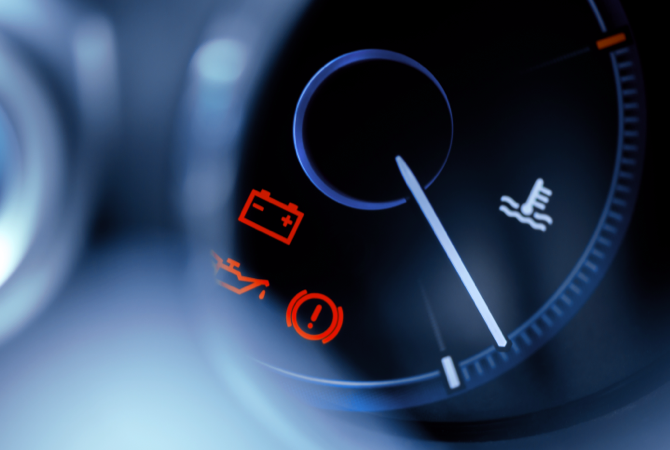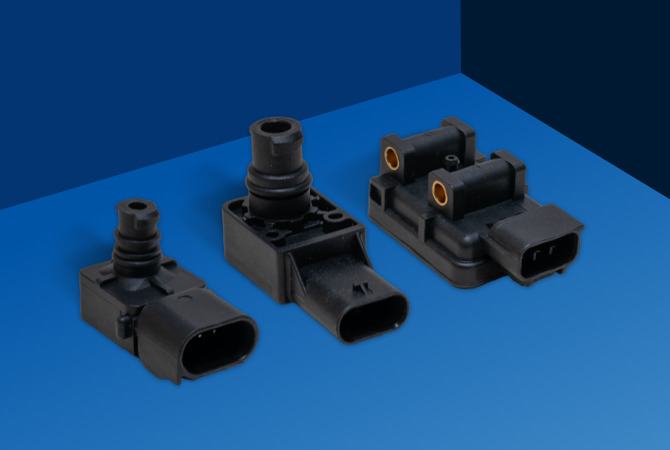Sensors & Your Vehicle
From safety features like automatic braking to ensuring the engine runs efficiently, sensors play a key role in the operation of today’s vehicles. Electronic devices that monitor various systems and components, sensors send the information they collect to the car’s Electronic Control Unit (ECU). The ECU analyzes the data and makes any required changes to ensure optimal performance or vehicle safety.

What Does a MAP Sensor Do?
The manifold absolute pressure (MAP) sensor is typically found on internal combustion engines with fuel injection and is key to optimizing engine performance. Commonly referred to as a MAP sensor, it is responsible for measuring the air pressure in the intake manifold. The ECU uses this information to determine the right air-fuel for the engine to complete an efficient combustion process. In addition, the MAP sensor plays a role in ignition timing by helping the ECU determine when to ignite the fuel under different engine load conditions.
Operating in real time, the information that the MAP sensor collects helps the ECU to adjust the fuel injection when necessary. This ability to make changes as needed means the engine can dynamically adapt when the driver accelerates, decelerates or is idling.
What Vehicles Use MAP Sensors?
As electronic management systems became increasingly prevalent on vehicles, MAP sensors started to appear on vehicles in the mid-1970s. Commonly found on fuel-injected engines, the MAP sensor can be found on the intake manifold while on a forced-induction engine it can be found on the intake tract. Some vehicles use a mass air flow (MAF) sensor rather than a MAP sensor to measure the amount of air going into the intake manifold while still other vehicles use both a MAP sensor and a MAF sensor.
How Long Does a MAP Sensor Last?

Despite being exposed to heat and high temperatures, MAP sensors typically last for 100,000 miles.
What are the Signs of a Bad MAP Sensor?
Having a properly functioning MAP sensor maximizes gas mileage and ensures optimal engine performance. When the MAP sensor is malfunctioning or failing, it can cause the air-fuel to become imbalanced resulting in reduced gas mileage, increased emissions and poor engine performance. Learn to recognize the MAP sensor failure symptoms:
Check Engine Light
The check engine light may become illuminated if the MAP sensor is malfunctioning.
Decreased gas mileage
Without the ability to properly regulate the air-fuel mixture, a failing MAP sensor can result in reduced fuel economy.
Gasoline Smell
A bad MAP sensor can cause a rich air-fuel mixture that may lead to a strong smell of gasoline.
Reduced Power
Poor acceleration or sluggish engine performance can point to a faulty MAP sensor.
Poor Engine Performance
Rough idling or stalling could be the fault of a bad MAP sensor that has lost the ability to help control combustion intervals and engine timing.
Failed Emissions Test
For those who live in a state that does emissions testing, a bad MAP sensor can cause your vehicle to fail an emissions test.
If you notice any of these symptoms, have your auto technician examine the vehicle to make a diagnosis.
Can You Drive with a Bad MAP Sensor?
Driving with a bad MAP sensor can cause diminished engine performance. You may find that your vehicle uses more gas and has reduced engine performance with poor acceleration, rough idling or stalling. In addition, if your state does emissions inspections, a failing MAP sensor will result in your vehicle failing the test. To keep your vehicle running smoothly, you should avoid driving with a bad MAP sensor. If you suspect that your MAP sensor is failing, have your auto technician check it out.

Learn more about quality brakes, find your car part, or find where to buy your auto part today.
The content in this article is for informational purposes only. You should consult with a certified technician or mechanic if you have questions relating to any of the topics covered herein. DRiV and its affiliates (including Federal-Mogul Motorparts LLC) will not be liable for any loss or damage caused by your reliance on any content.